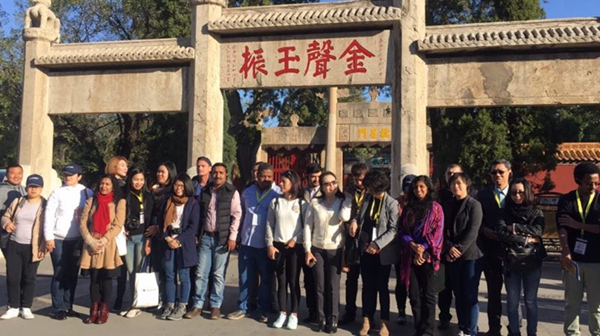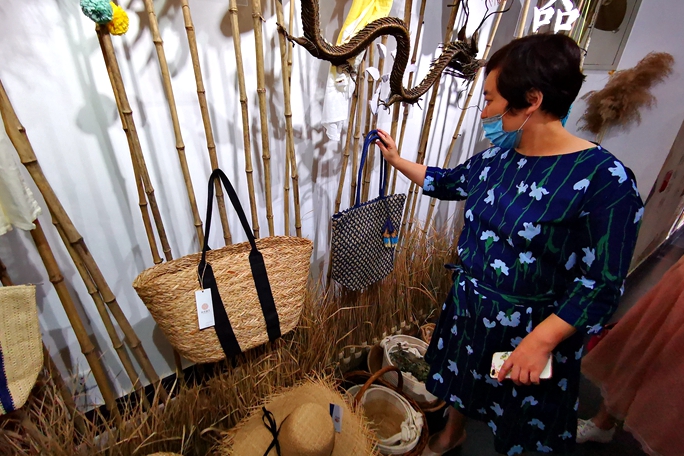Teaching-related relics on display in Confucius' birthplace
 |
|
Foreign journalists pose for a group photo in front of a memorial gate in Confucius Temple in Qufu, a county-level city in Jining, Shandong province, Oct 18. The temple in Qufu is the largest and most renowned one to the famous thinker, educator and founder of Confucianism, who lived at the end of the Spring and Autumn Period (770-476 BC). [Photo provided to chinadaily.com.cn] |
The exhibits include a guqin (Chinese zither) from the Confucius mansion in the Tang Dynasty (618-907), a rare edition of The Analects, as well as text books, teaching tools and teacher certificates from various dynasties.
All the exhibits were donated by individuals or cultural institutions from home and abroad, including the Confucius Institute and the Republic of Korea's Confucianism Culture Museum, according to Qi Wanxue, Party chief of Qufu Normal University, where the exhibition is held.
Luo Chenglie, an 83-year-old professor of the university, has donated more than 2,700 Confucius' badges, statues and portraits to the exhibition.
Qi said all items displayed would be collected by China's first teachers' museum, whose architectural designs have recently been finished.
Covering 40 hectares and with a floor space of 20,000 square meters, the museum will be built on the western campus of Qufu Normal University.
Confucius (551-479 BC) founded Confucianism, a school of thought that deeply influenced later generations. He was also the first Chinese person to set up private schools enrolling students from all walks of life.

 Shandong Culture and Tourism Consumption Season
Shandong Culture and Tourism Consumption Season Culture, tourism sectors pick up in Shandong as epidemic wanes
Culture, tourism sectors pick up in Shandong as epidemic wanes

